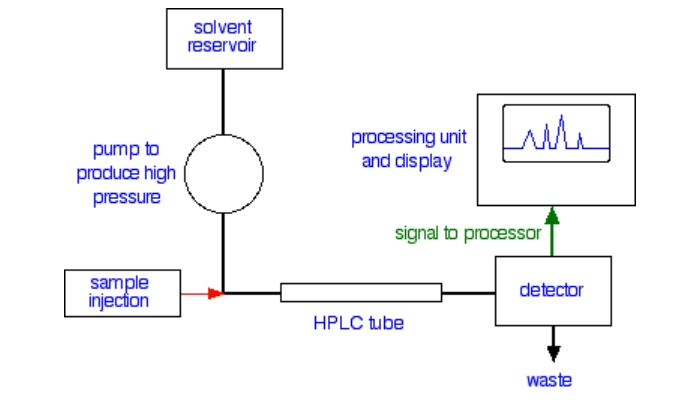HPLC stands for High-Performance Liquid Chromatography (formerly referred to as High-Pressure Liquid Chromatography ).
It is a chromatographic technique used to separate the components in a mixture, to identify each component, and to quantify each component.
In general, the method involves a liquid sample being passed over a solid adsorbent material packed into a column using a flow of liquid solvent.
Each analyte in the sample interacts slightly differently with the adsorbent material, thus retarding the flow of the analytes. If the interaction is weak, the analytes flow off the column in a short amount of time, and if the interaction is strong, then the elution time is long.
High Performance Liquid Chromatography
A flow diagram for HPLC looks like this

HPLC is an advance on column chromatography where the solvent is forced through the column at a very high pressure of up to 400 atmospheres. This makes the whole process much faster, but also allows you to use a much smaller particle size in the column
There are two forms of HPLC – normal phase HPLC and reversed phase HPLC. In normal phase HPLC, the stationary phase is silica and the mobile phase is a non-polar solvent like hexane. W
The retention time of a particular component of a mixture is measured from the time of injection to its maximum peak height in the detector.